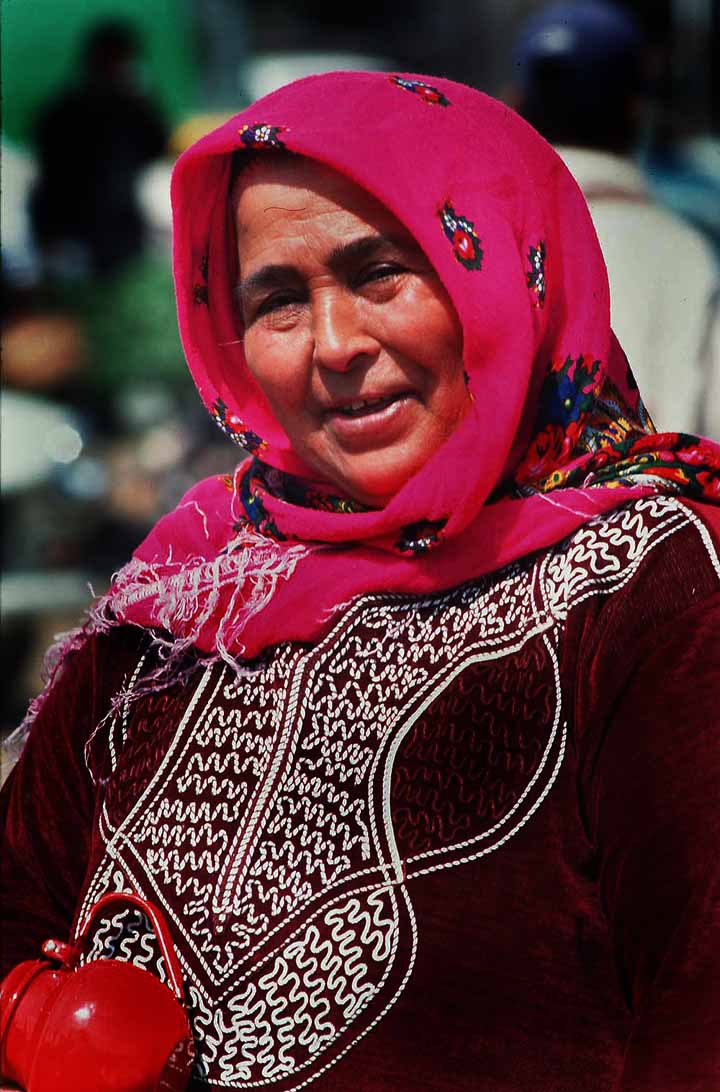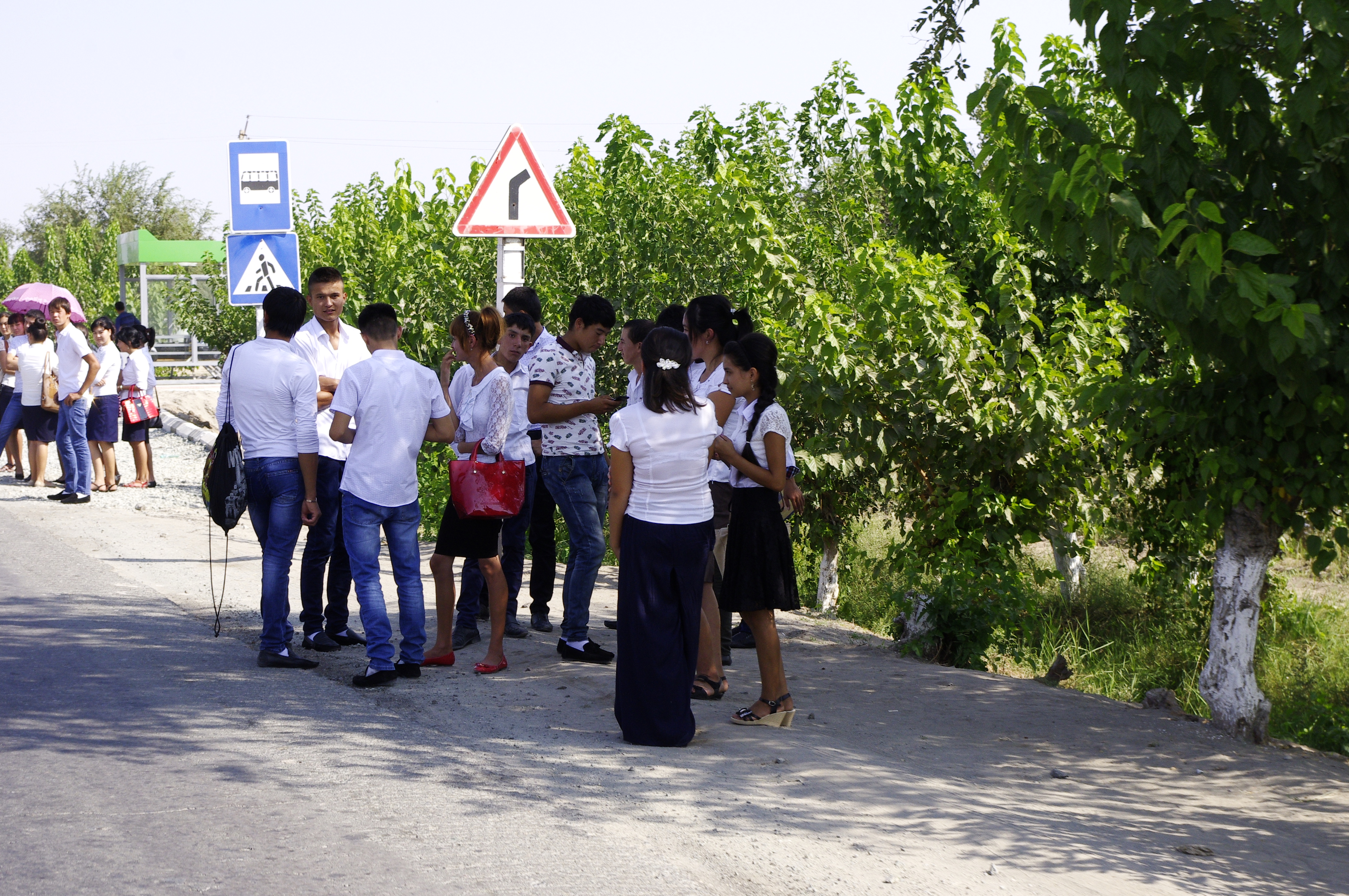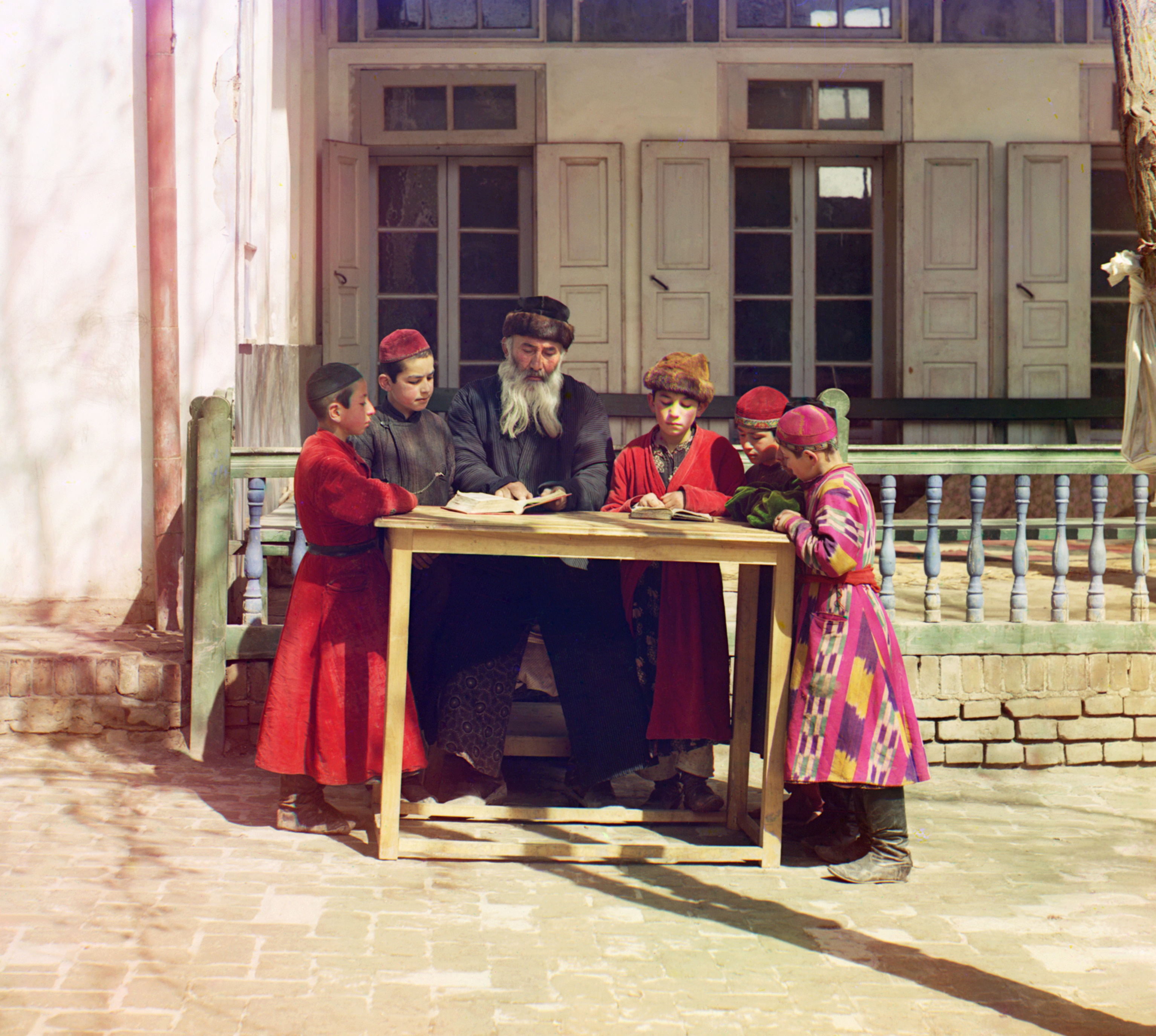|
Anvar-qori Tursunov
Anvar-qori Tursunov ( uz, Анвар қори Турсунов; russian: Анвар-кори Турсунов) was a prominent imam- khatib at the Kukeldash mosque in Tashkent, Uzbekistan. He was stabbed several times on 31 July 2009, but recovered. Activities Tursunov fought actively against "extremist" Islamic activity in Uzbekistan, and often served as a witness for the prosecution in trials for suspected members of outlawed Islamic groups such as Hizb-ut-Tahrir and the Islamic Movement of Uzbekistan. He had called for Uzbek Muslims to resist "foreign influences", such as wearing the hijab. He espoused many of his views on his television program ''Hidoyat Sari'' (''Towards Guidance''). He has been mentioned as a possible successor to the post of Chief Mufti of Uzbekistan, the head of the Muslim Board of Uzbekistan. Stabbing At 10:30pm on 31 July 2009, Tursunov was at his home in the Yangi-Abad district when there was a knock on his door. His son answered the door, and was told ... [...More Info...] [...Related Items...] OR: [Wikipedia] [Google] [Baidu] |
Imam
Imam (; ar, إمام '; plural: ') is an Islamic leadership position. For Sunni Muslims, Imam is most commonly used as the title of a worship leader of a mosque. In this context, imams may lead Islamic worship services, lead prayers, serve as community leaders, and provide religious guidance. Thus for Sunnis, anyone can study the basic Islamic sciences and become an Imam. For most Shia Muslims, the Imams are absolute infallible leaders of the Islamic community after the Prophet. Shias consider the term to be only applicable to the members and descendents of the '' Ahl al-Bayt'', the family of the Islamic prophet Muhammad. In Twelver Shiasm there are 14 infallibles, 12 of which are Imams, the final being Imam Mahdi who will return at the end of times. The title was also used by the Zaidi Shia Imams of Yemen, who eventually founded the Mutawakkilite Kingdom of Yemen (1918–1970). Sunni imams Sunni Islam does not have imams in the same sense as the Shi'a, an importan ... [...More Info...] [...Related Items...] OR: [Wikipedia] [Google] [Baidu] |
Khatib
In Islam, a khatib, khateeb or hatib ( ar, خطيب ''khaṭīb'') is a person who delivers the sermon (''khuṭbah'') (literally "narration"), during the Friday prayer and Eid prayers. The ''khateeb'' is usually the prayer leader ('' imam''), but the two roles can be played by different people. The khatib should be knowledgeable of how to lead the prayer and be competent in delivering the speech (''khutba'') however there are no requirements of eligibility to become a khatib beyond being an Adult Muslim. Some Muslims believe the khatib has to be male but women do lead Friday prayers in number of places. Women may be khateebahs. Edina Lekovic gave the inaugural khutba at the Women's Mosque in 2015. See also * Al-Khatib * Khattab * Khutba * İmam Hatip school * Khatib - a MRT train station in Singapore * Khatib In Islam, a khatib, khateeb or hatib ( ar, خطيب ''khaṭīb'') is a person who delivers the sermon (''khuṭbah'') (literally "narration"), during the Friday ... [...More Info...] [...Related Items...] OR: [Wikipedia] [Google] [Baidu] |
Tashkent, Uzbekistan
Tashkent (, uz, Toshkent, Тошкент/, ) (from russian: Ташкент), or Toshkent (; ), also historically known as Chach is the Capital city, capital and List of cities in Uzbekistan, largest city of Uzbekistan. It is the most populous city in Central Asia, with a population of 2,909,500 (2022). It is in northeastern Uzbekistan, near the border with Kazakhstan. Tashkent comes from the Turkic languages, Turkic ''tash'' and ''kent'', literally translated as "Stone City" or "City of Stones". Before Islamic influence started in the mid-8th century AD, Tashkent was influenced by the Sogdian people, Sogdian and Turkic people, Turkic cultures. After Genghis Khan destroyed it in 1219, it was rebuilt and profited from the Silk Road. From the 18th to the 19th century, the city became an Tashkent (1784), independent city-state, before being re-conquered by the Khanate of Kokand. In 1865, Tashkent fell to the Russian Empire; it became the capital of Russian Turkestan. In Soviet Unio ... [...More Info...] [...Related Items...] OR: [Wikipedia] [Google] [Baidu] |
Hizb-ut-Tahrir
Hizb ut-Tahrir (Arabicحزب التحرير (Translation: Party of Liberation) is an international, political organization which describes its ideology as Islam, and its aim the re-establishment of the Islamic Khilafah (Caliphate) to resume Islamic ways of life in the Muslim world. The caliphate would unite the Muslim community (Ummah) under their Islamic creed and implement the Shariah, so as to then carry the proselytizing of Islam to the rest of the world. The party was founded in 1953 as a political organization in then Jordanian-controlled Jerusalem by Taqiuddin al-Nabahani, an Islamic scholar and appeals court judge qadi (religious court judge) in Mandatory Palestine. Al-Nabhani developed a program and "draft constitution" for the caliphate, Draft Constitution of the Khilafah State, 2011: Article 26 an-Nabhani, ''The Islamic State'', 1998: p.240–276 from Haifa. Since then, Hizb ut-Tahrir has spread to more than 50 countries, and grown to a membership estimated to be be ... [...More Info...] [...Related Items...] OR: [Wikipedia] [Google] [Baidu] |
Hijab
In modern usage, hijab ( ar, حجاب, translit=ḥijāb, ) generally refers to headcoverings worn by Muslim women. Many Muslims believe it is obligatory for every female Muslim who has reached the age of puberty to wear a head covering. While such headcoverings can come in many forms, hijab often specifically refers to a cloth wrapped around the head, neck and chest, covering the hair and neck but leaving the face visible. The term was originally used to denote a partition, a curtain, or was sometimes used for the Islamic rules of modesty. This is the usage in the verses of the Qur'an, in which the term ''hijab'' sometimes refers to a curtain separating visitors to Muhammad's main house from his wives' residential lodgings. This has led some to claim that the mandate of the Qur'an applied only to the wives of Muhammad, and not to the entirety of women. Another interpretation can also refer to the seclusion of women from men in the public sphere, whereas a metaphysical dimens ... [...More Info...] [...Related Items...] OR: [Wikipedia] [Google] [Baidu] |
Islam In Uzbekistan
Islam is the dominant religion in Uzbekistan. Islamic customs were broadly adopted by the ruling elite, and they began patronage of scholars and conquerors such as Muhammad al-Bukhari, Al-Tirmidhi, Ismail Samani, al-Biruni, Avicenna, Tamerlane, Ulugh Begh, and Babur. Despite its predominance and history, the practice of Islam has been far from monolithic since the establishment of the Uzbek Soviet Socialist Republic. Many versions of the faith have been practiced in today's Republic of Uzbekistan. Most of them stray far from conventional Islamic tradition and law, and practice a far more relaxed approach. Heavily authoritarian interpretations of the Qur’an, including Shariah Law, as seen in parts of the Middle East, are almost unheard of in Uzbekistan. There are also traditions from the Zoroastrian era which are still practiced, before the introduction of Islam to the country. Demographics Almost 90% of the population is Muslim. The CIA Factbook estimates 88%, mostly Sunni. ... [...More Info...] [...Related Items...] OR: [Wikipedia] [Google] [Baidu] |
Uzbekistani Muslims
The demographics of Uzbekistan are the demographics, demographic features of the population of Uzbekistan, including population growth, population density, Ethnic group, ethnicity, education level, health, economic status, religious affiliations, and other aspects of the population. The nationality of any person from Uzbekistan is Uzbekistani, while the ethnic Uzbek majority call themselves Uzbeks. Much of the data is estimated because the last census was carried out in Soviet times in 1989. Demographic trends Uzbekistan is Central Asia's most populous country. Its 35 million people ( estimate) comprise nearly half the region's total population. The population of Uzbekistan is very young: 25.1% of its people are younger than 14. According to official sources, Uzbeks comprise a majority (84.4%) of the total population. Other ethnic groups, as of 1996 estimates, include Russians (5.5% of the population), Tājik people, Tajiks (5%), Kazakhs (3%), Karakalpaks (2.5%), and Tatars (1. ... [...More Info...] [...Related Items...] OR: [Wikipedia] [Google] [Baidu] |
Year Of Birth Missing (living People)
A year or annus is the orbital period of a planetary body, for example, the Earth, moving in its orbit around the Sun. Due to the Earth's axial tilt, the course of a year sees the passing of the seasons, marked by change in weather, the hours of daylight, and, consequently, vegetation and soil fertility. In temperate and subpolar regions around the planet, four seasons are generally recognized: spring, summer, autumn and winter. In tropical and subtropical regions, several geographical sectors do not present defined seasons; but in the seasonal tropics, the annual wet and dry seasons are recognized and tracked. A calendar year is an approximation of the number of days of the Earth's orbital period, as counted in a given calendar. The Gregorian calendar, or modern calendar, presents its calendar year to be either a common year of 365 days or a leap year of 366 days, as do the Julian calendars. For the Gregorian calendar, the average length of the calendar year (the ... [...More Info...] [...Related Items...] OR: [Wikipedia] [Google] [Baidu] |
Living People
Related categories * :Year of birth missing (living people) / :Year of birth unknown * :Date of birth missing (living people) / :Date of birth unknown * :Place of birth missing (living people) / :Place of birth unknown * :Year of death missing / :Year of death unknown * :Date of death missing / :Date of death unknown * :Place of death missing / :Place of death unknown * :Missing middle or first names See also * :Dead people * :Template:L, which generates this category or death years, and birth year and sort keys. : {{DEFAULTSORT:Living people 21st-century people People by status ... [...More Info...] [...Related Items...] OR: [Wikipedia] [Google] [Baidu] |
Uzbekistani Victims Of Crime
The demographics of Uzbekistan are the demographic features of the population of Uzbekistan, including population growth, population density, ethnicity, education level, health, economic status, religious affiliations, and other aspects of the population. The nationality of any person from Uzbekistan is Uzbekistani, while the ethnic Uzbek majority call themselves Uzbeks. Much of the data is estimated because the last census was carried out in Soviet times in 1989. Demographic trends Uzbekistan is Central Asia's most populous country. Its 35 million people ( estimate) comprise nearly half the region's total population. The population of Uzbekistan is very young: 25.1% of its people are younger than 14. According to official sources, Uzbeks comprise a majority (84.4%) of the total population. Other ethnic groups, as of 1996 estimates, include Russians (5.5% of the population), Tajiks (5%), Kazakhs (3%), Karakalpaks (2.5%), and Tatars (1.5%).Uzbekistan iCIA World Factbook ... [...More Info...] [...Related Items...] OR: [Wikipedia] [Google] [Baidu] |
Uzbekistani Religious Leaders
The demographics of Uzbekistan are the demographic features of the population of Uzbekistan, including population growth, population density, ethnicity, education level, health, economic status, religious affiliations, and other aspects of the population. The nationality of any person from Uzbekistan is Uzbekistani, while the ethnic Uzbek majority call themselves Uzbeks. Much of the data is estimated because the last census was carried out in Soviet times in 1989. Demographic trends Uzbekistan is Central Asia's most populous country. Its 35 million people ( estimate) comprise nearly half the region's total population. The population of Uzbekistan is very young: 25.1% of its people are younger than 14. According to official sources, Uzbeks comprise a majority (84.4%) of the total population. Other ethnic groups, as of 1996 estimates, include Russians (5.5% of the population), Tajiks (5%), Kazakhs (3%), Karakalpaks (2.5%), and Tatars (1.5%).Uzbekistan iCIA World Factbook/ref> Uzb ... [...More Info...] [...Related Items...] OR: [Wikipedia] [Google] [Baidu] |








